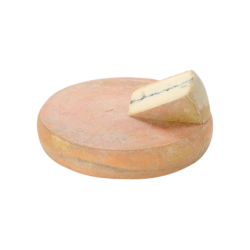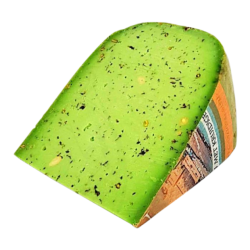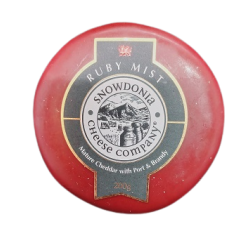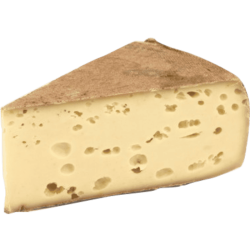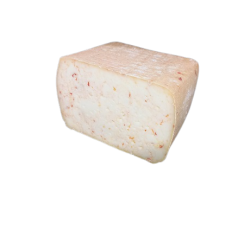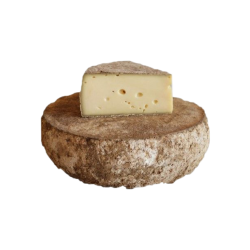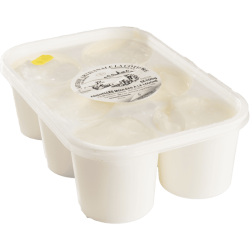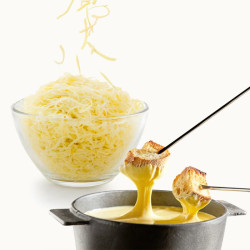
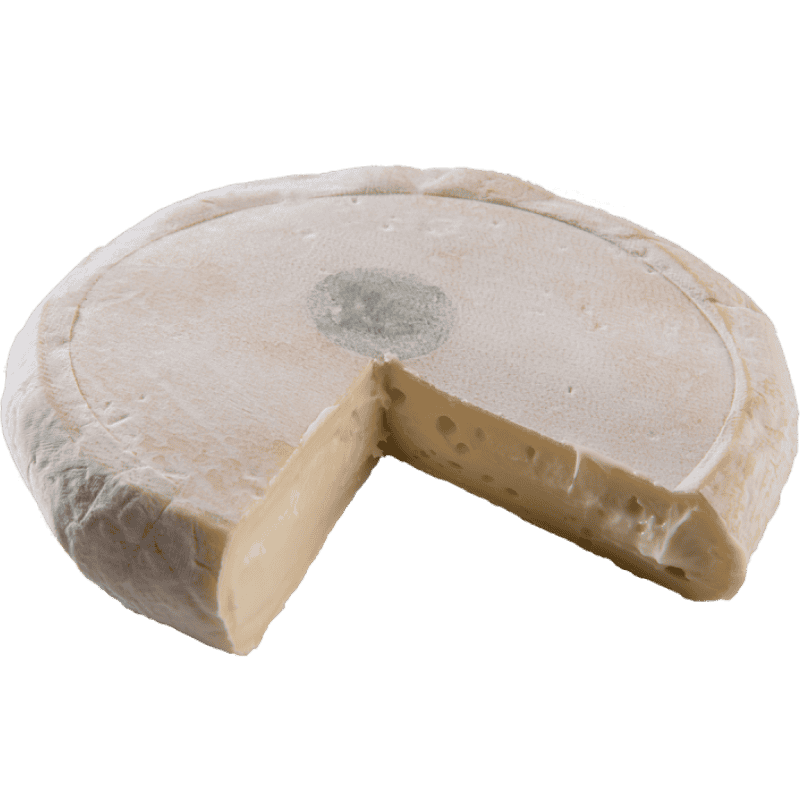
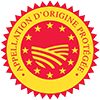






Reblochon or Reblochon de Savoie is an appellation designating a French cheese produced in Savoie and Haute-Savoie.
This appellation of origin comes from the massif of Bornes - valley of Thônes, from the massif of Aravis and from micro-regions like the valley of Arly. This appellation benefits from an AOC since the first decree of August 7, 1958, completed in 1976, 1986, 1990 and 1991.
Its name comes from the Savoyard term "ré-blocher" meaning "to milk a second time" in the 16th century, or "râblasse", a name given to a local fraud, but the practice would be more ancient.
The tradition is that the farmers of the massif did a first milking for the owner (generally the abbeys), and a second milking once the night fell for their own account.
It seems that as early as the Renaissance, rents, due in kind, were calculated according to the volume of milk milked. The owner or his controller would check the milking to deduce the number of cheeses owed by the farmer. In order to reduce the fee, it was in the farmer's interest to do an incomplete milking, which he completed once the controller had left.
This second milking milk, which was not very abundant but rich in cream, had a higher fat content and was therefore of better quality. In the 16th century, it was also called "devotional cheese" when it was offered to the Carthusian monks of the Thônes valley, in thanks for their blessing on the peasants' chalets.
It takes an average of four liters of raw, whole milk to make a 500 gram Reblochon. In the dairy, after the collection and mixing of the refrigerated milk contained in the farmers' tanks, it is poured into the dairy's tanks and heated to a temperature of about 37°C.
Natural rennet is then added to obtain the curd, which is delicately cut into small grains with a curd cutter. The cheese maker then places the casein tablet that distinguishes the dairy or fruit reblochon from the farm reblochon (and which, according to popular belief, brings good luck to those who eat it).
A red label indicates a dairy or fruit reblochon, a green label a farm reblochon, whose quality is guaranteed by the Union of Farm Reblochon Producers (UPRF). The cheese is then subjected to a weight intended to press it to complete the draining and eliminate the excess whey. After more than an hour of pressing, during which the cheese is turned over, it is then removed from the mould and salted. It is then placed in a dryer at a temperature of 16 °C to 18 °C for four days, before being placed for at least fifteen days in the maturing cellar, where it is washed and turned regularly.
After this stay in the cellar, the Savoy dairy reblochon is wrapped in a suitable paper, from which it is insulated by a thin sheet of dehydrated wood to regulate its humidity and allow it to continue maturing.
Data sheet
- MILK
- raw milk cow's milk
- TEXTURE
- Flexible
- ALLERGEN
- Milk
- GRASSE MATERIAL
- 26 %
- PROVENANCE
- Rhône-Alpes
- SEASON
- Toute l'année
- SUGGESTED WINE
- Mondeuse rouge
- INTENSITY
- médium
- APPELLATION
- AOP
- REWARD
- Médaille d'or 2025 salon de l'agriculture Paris
Specific References
- EAN13
- 3877949200009
Farmhouse Reblochon PDO
The farmhouse Reblochon comes from a Gaec in Haute-Savoie, it is creamy with a nutty taste.
Cheese made from raw cow's milk. About 500 g






